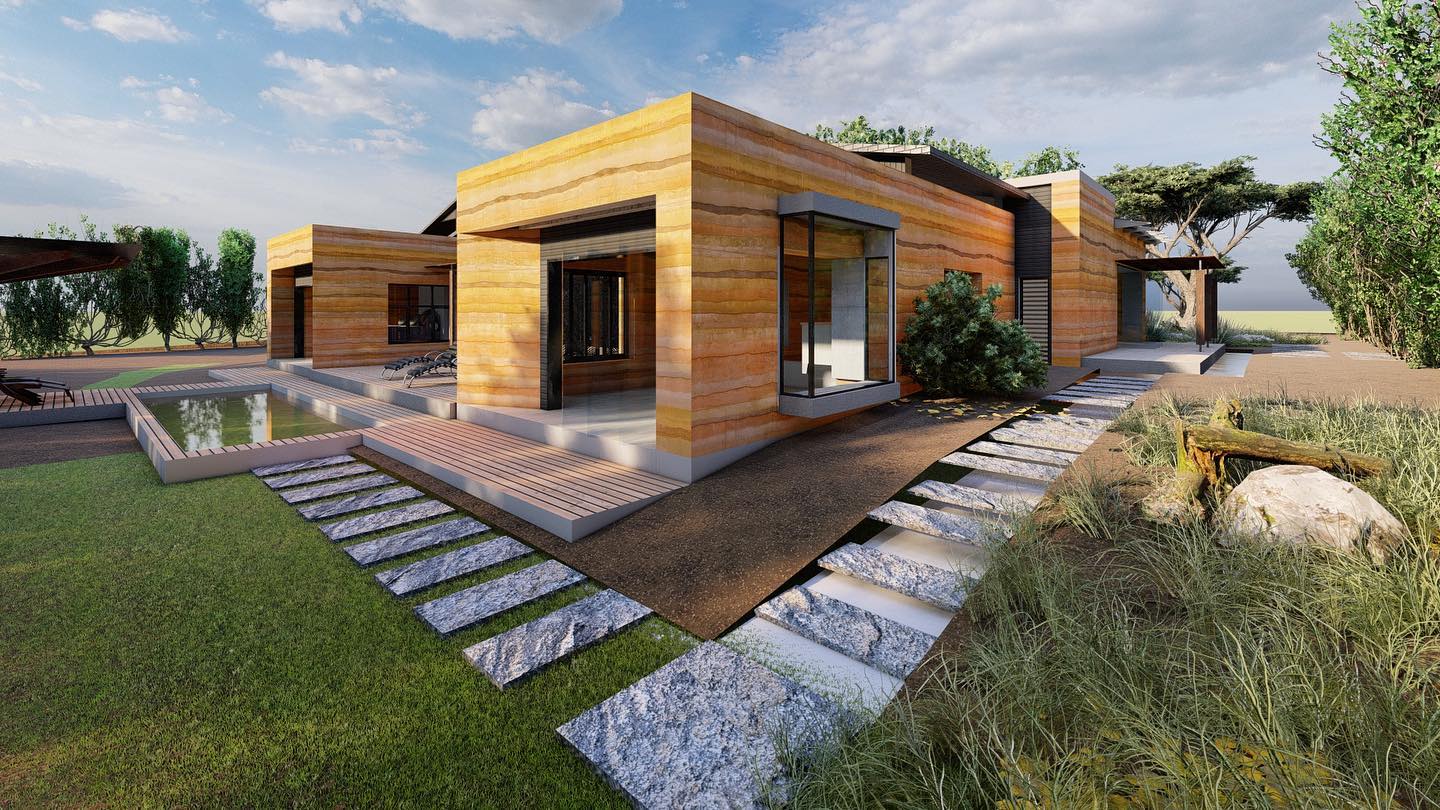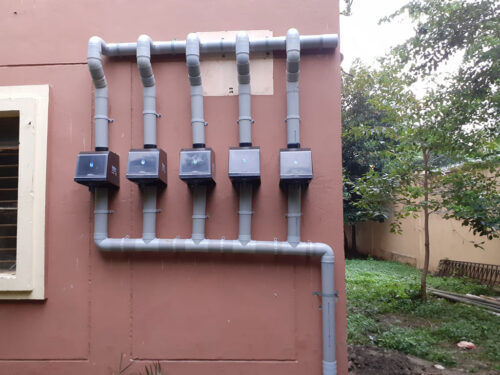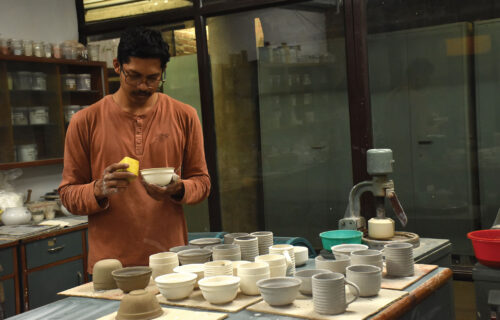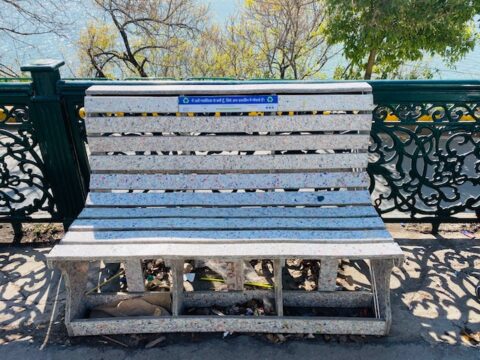(Article contributed by Pragya Raut, architect from Nepal. Inputs of the article reflects one to one conversation between Pragya & Michael Beukes, the founder of Rammteck. Only the Heading of the article is edited by theecopreneur.in)
Rammed earth structures are one of the oldest technologies being practiced since ages by builders and dwellers all around the world. From ‘Great walls’ of China to areas of France including Dijon and Lyon of South, prominent traces of rammed mud structures can be found almost everywhere as an evidence.
Still, nearly half of the world’s total population in unfired earth structures and these structures are imagined to be mundane and ordinary by default. However the cases are different when it comes to Rammteck’s rammed earth buildings in South Africa.
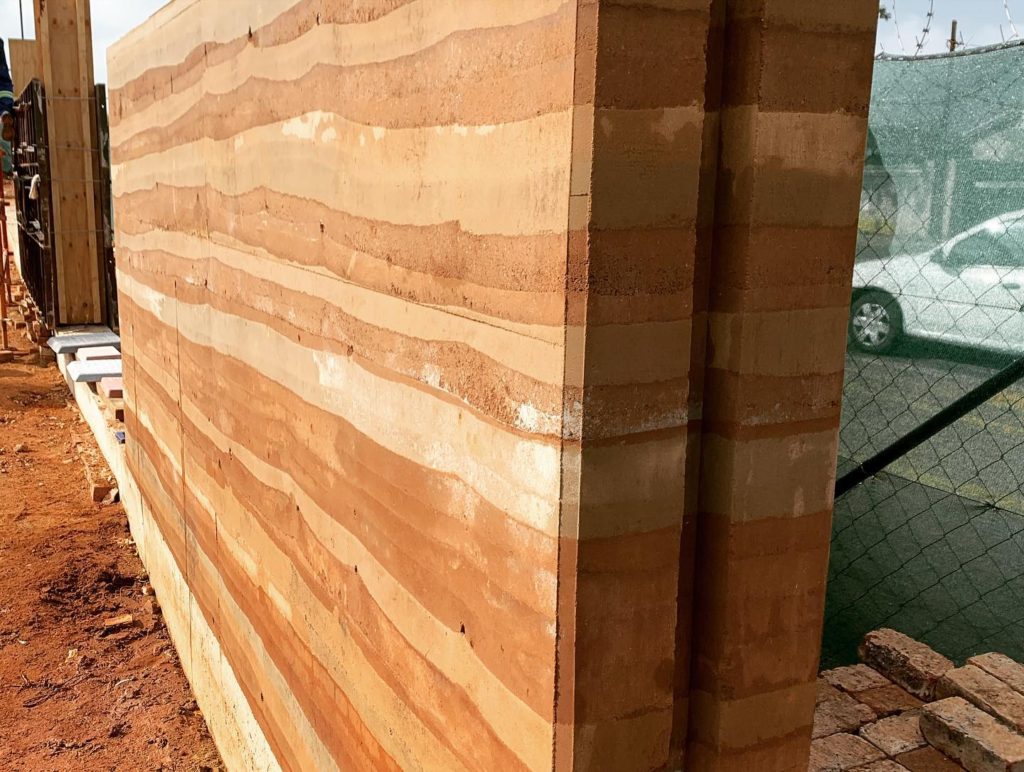
Whoever sees these beautifully textured thick walls standing robustly, first of all finds it hard to believe that they are bare walls without any wallpapers or painting. It takes time to absorb the fact that these walls & the textures are created solely from the building materials alone i.e sand and soil. Needless to say that these buildings are subjects of attractions for any building enthusiasts and hence have many admirers from its neighboring countries like Brazil, Chile to Asian nations like India and Nepal.
Established in 2009, Rammteck is the leading building company based in South Africa which brought the rammed earth technology, a forgotten ancient art of building into mainstream into building industry; and made it look absolutely interesting. Michael Beukes, the founder of Rammteck has so far accomplished more than 25 public buildings and trained more than 400 laymen on this skill of building so far. Mike (as he likes being called), only takes 2/3 trained workers with him and hires from respective community to fill up workmanship requirements for every project in new community,.
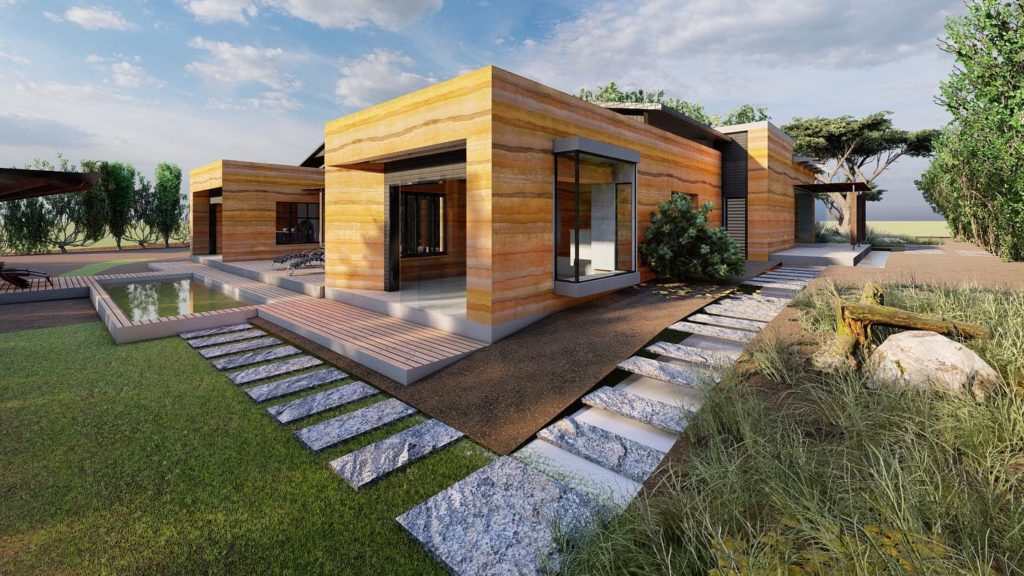
Mike remembers his journey with Rammed Earth started more than a decade ago, when some company wanted to spend their little percent of budget on conducting some skill-based training. However, he and his other friends decided to build a building from rammed earth with that amount. In beginning they were totally new to material and technology. They researched on the internet and started learning and teaching each other. It took one whole year for the team to get that single project done but Mike had found his calling. After Years and years of practice & experimentation with sand & soil, now he is expert at this technology and works completely like an engineer.
So, what is Rammed Earth Technology?
As per official website of Rammtek “Rammed earth is taking a mixture of selected aggregates, including sand, gravel, silt and a small amount of clay, ramming them into layers in between flat panels called shutter work and making walls from them. Traditionally natural binders like animal bloods were used to bind which in modern days are replaced by 5-10 percent of cement to increase strength and durability. Rammed earth can be of two types depending upon the composition and pressure created to make walls. They are un-stabilized and stabilized rammed earth. In South Africa, mostly stabilized rammed earth is preferred as it is highly pressurized, enough to withstand the buildings from heavy rainfall and storms natural to South Africa.
The colour of these walls is due to the used building materials i.e earth and aggregate. As the ramming process is done layer by layer, horizontal stratifications are added to the facade of the walls which enhance and determine the overall appearance of the walls. Rammteck plays with these techniques of controlling these features or eliminating to create magic and curiosities in their work.”
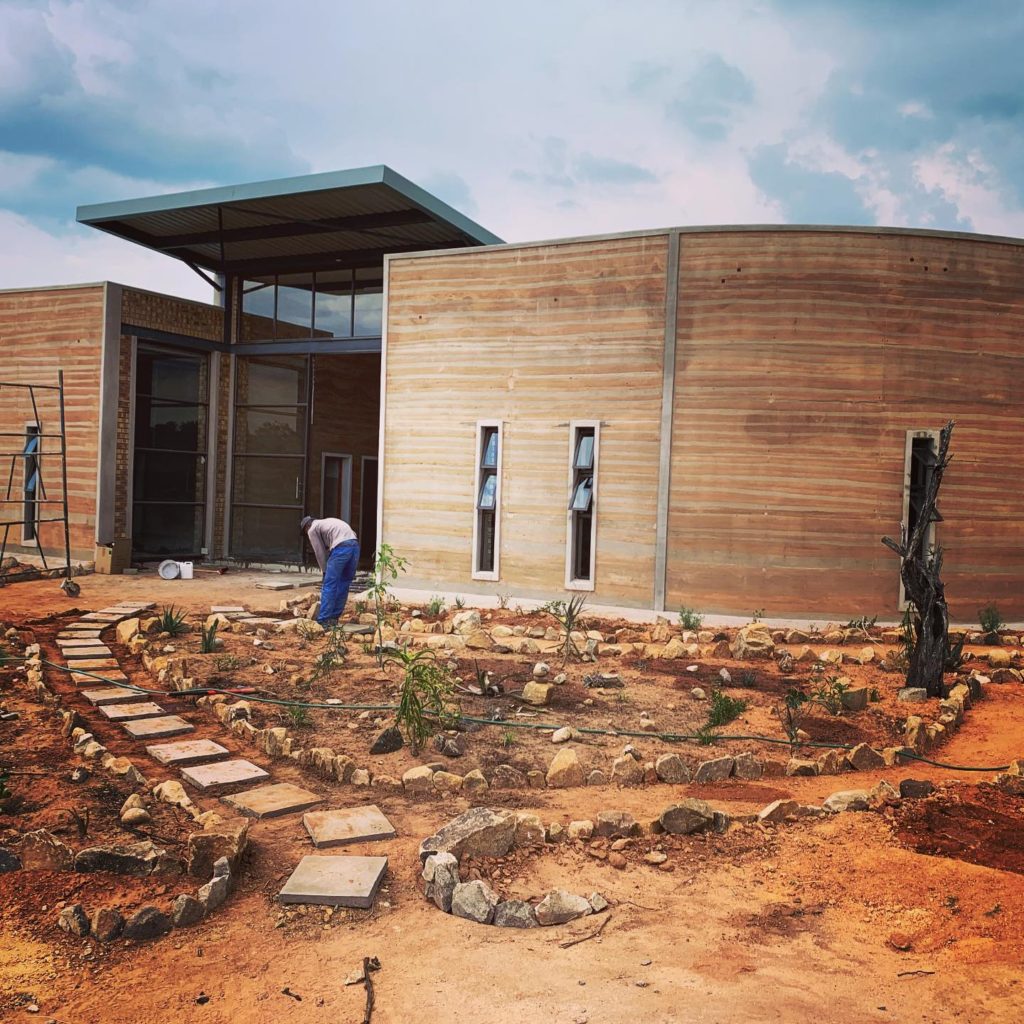
Rammed earth have numerous advantages. First of all, unlike Reinforced Concrete Technology (RCC), very less percent of cement is used which automatically makes it environmentally friendly. Secondly, materials are often locally available and subtle technical knowledge is enough that anyone can be hired and taught to work. Most of the energy used in the construction is just in quarrying of these raw materials and transporting it to the site because of which rammed earth appears like a perfect alternative for sustainable dwellings with less ecological footprints and embodied energy.
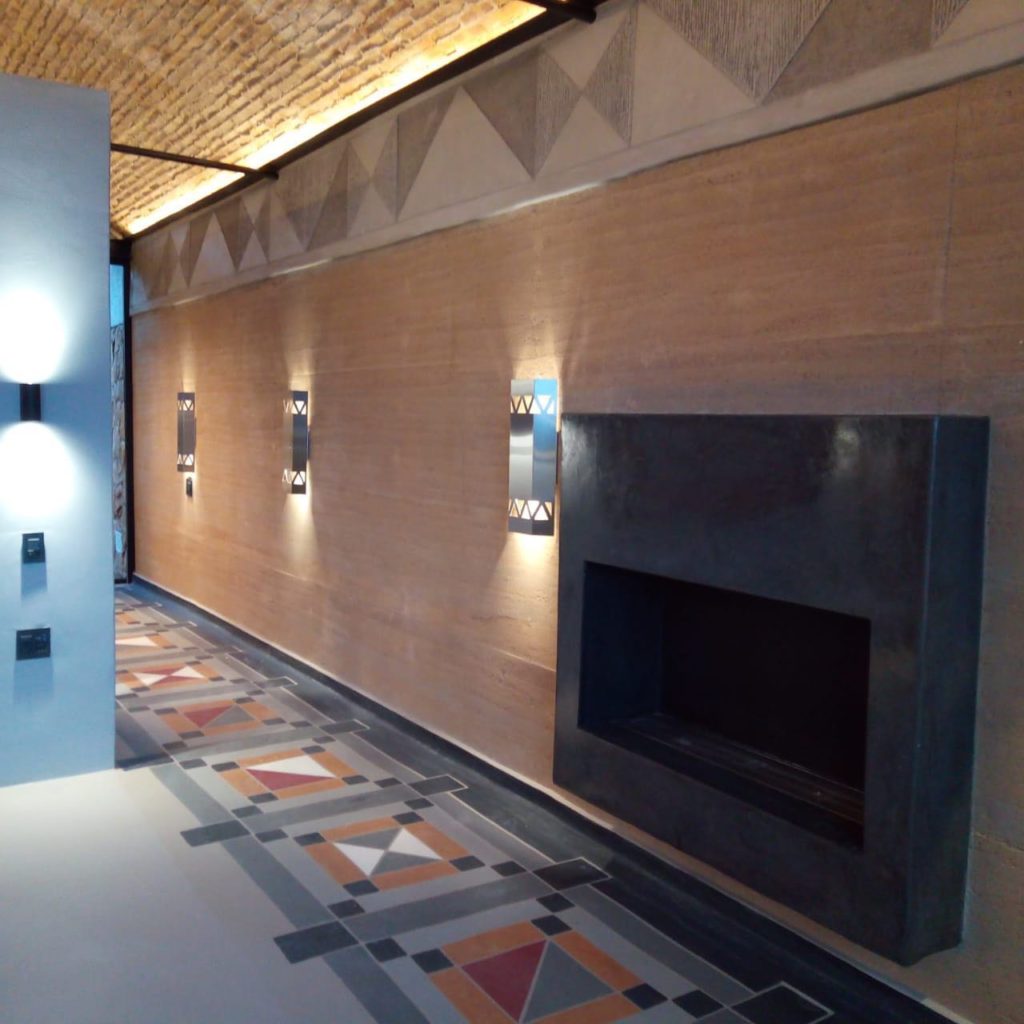
Rammed earth walls are extremely long lasting and their strength increases along with years. Along with exceptional strength and durability, the thick walls of Rammed earth also provide high thermal mass because of which buildings moderate the fluctuations in temperature. The inside temperature of buildings are never affected as the walls take hours and hours to peak up the outside hot temperature and hence its more suited for hot places. These thermal and non allergic properties often impress the occupants of rammed earth buildings by creating a very comfortable and hygienic living environment. “
These thick walls are also soundproof because of which Mike thinks they are perfectly suitable to construct school buildings. Busy in the project in the Eastern cape for an auditorium these days, most of Mike’s projects have been public buildings. When it comes to private residences, a social stereotype persists in South Africa as people from low economic backgrounds living in mud houses don’t find it fascinating when someone proposes they would build sand buildings for them. ‘But what they fail to understand is that they are actually being offered something better than brick houses.’ Mike adds. And the hesitation stays till the first wall is made and shown. This is something that needs to be overcome in rural communities.
Any normal, unemployed person willing to do a little intensive physical workout would have something to look forward to feel empowered, once acquainted with Rammed earth technology and that was why Mike himself was so fascinated by it in the first place. No specialized manpower with no requirement of degrees and people can start constructing themselves. Mike finds this so fulfilling. And indeed his company ‘Rammteck’ has been able to not only offer a proper solution for environmental conservation but also created socio-economic impacts training people in constructing economical sustainable buildings. The success and traction of Rammteck is also because crushing the prejudices of mediocrity assumed automatically in case of eco-friendly buildings, it has been able to present Rammed mud as a technology and material that is equally attractive and flexible to fit any modern day designs & functions.
(The above images may be subjected to copyrights of company. Through the permission taken by writer, we published above images.)
Contributed & Edited by Pragya Raut


